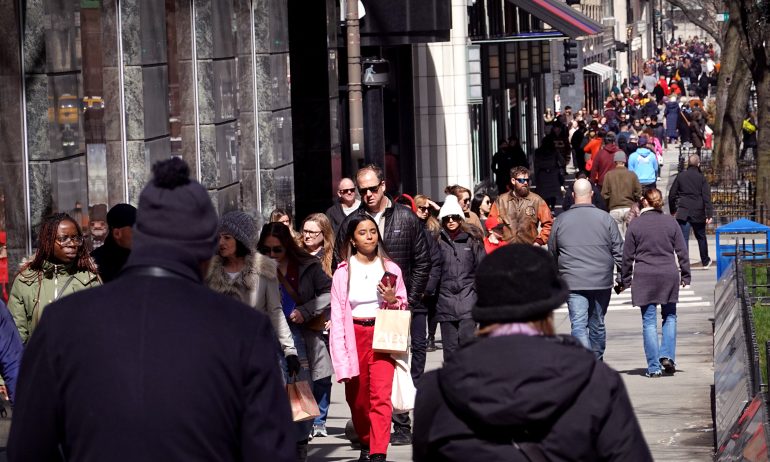GDP Report: Economy Slowed Down in Early 2023

Many or all of the products featured here are from our partners who compensate us. This influences which products we write about and where and how the product appears on a page. However, this does not influence our evaluations. Our opinions are our own. Here is a list of our partners and here's how we make money.
In the first three months of 2023, the U.S. economy faced continuing inflation, interest rate hikes, two bank failures and tightening credit conditions — and it shows.
The economy grew by an annual rate of 1.1% in the first quarter of 2023, compared with 2.6% in the last three months of 2022, according to an advance estimate of real gross domestic product from the Bureau of Economic Analysis released Thursday. The GDP includes the sum of all goods and services produced in the United States.
The first quarter GDP mostly reflects the latest estimates. As of April 26, the most recent GDP growth estimate for the first quarter of 2023 was 1.1%, according to the Federal Reserve Bank of Atlanta’s GDPNow forecasting model. Following the failure of two U.S. banks in March, Goldman Sachs cut its GDP forecast for 2023 from 1.5% to 1.2%. Economists surveyed by Bloomberg had forecast an annual growth rate of 1.9%.
In 2020, at the beginning of the COVID-19 pandemic, the annual rate of GDP dropped to levels that far surpassed even those during the Great Recession, federal data shows. By the end of 2020 and into 2021, GDP rebounded quickly. However, the first two quarters of 2022 showed signs of slowing down before a more robust finish at the end of the year.
The Q1 2023 GDP report seemed to have little initial impact on the stock markets, and Treasury yields spiked.
The decline in GDP in the first quarter was primarily due to decreases in private inventory investment, the report shows. The decline was also caused by a deceleration in nonresidential fixed investment — mainly a slowdown in wholesale trade, including machinery, equipment and supplies, as well as manufacturing of transportation equipment and petroleum and coal products. Single-family home construction also slowed down and contributed to the decline.
Growth in consumer spending largely helped to balance those declines, according to the BEA. Consumer spending, measured by the personal consumption expenditures price index, increased at 4.2% in the first quarter of 2023, compared with an increase of 3.7% in the last quarter of 2022. Excluding food and energy (which have the most volatile prices), the PCE price index increased 4.9% this month in Q1 2023, compared with an increase of 4.4% in Q4 2022. The Federal Reserve watches the PCE closely when determining rate hikes.
Next week, the Fed meets to determine if there will be another rate hike; nine consecutive rate hikes have occurred since March 2022. The CME FedWatch tool shows an overwhelming probability of a 25 basis point rate hike.
Photo by Scott Olson / Getty Images News via Getty Images

